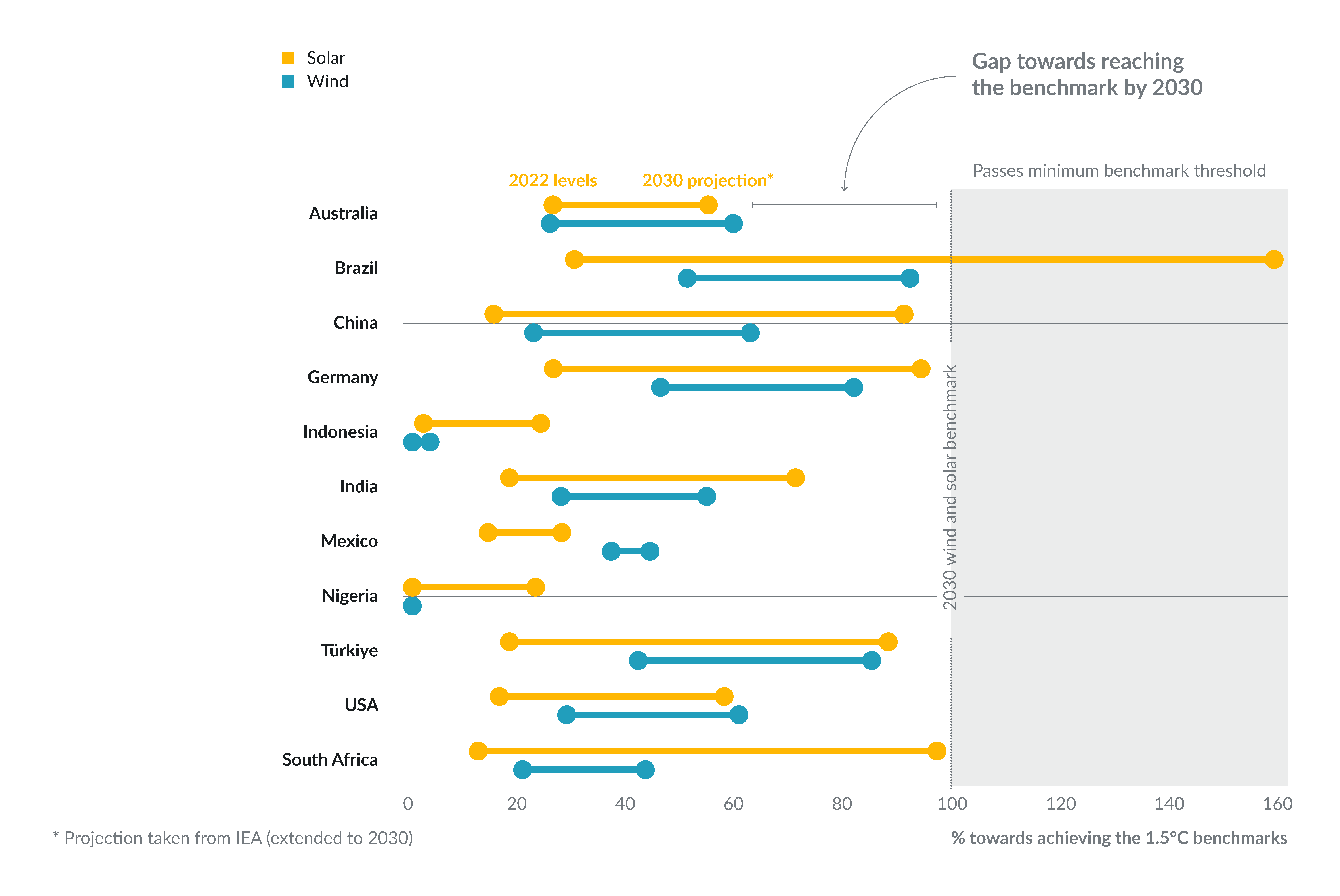At COP28, the world committed to tripling renewable capacity by 2030. This represents a key action that governments can take to cut emissions in line with the 1.5ºC warming limit. All countries are also called upon to submit new 2035 climate targets by early next year. Providing ambitious targets, including for wind and solar rollout, can help turn the tripling goal into action and close the gap to 1.5ºC, while also achieving universal electricity access by 2030.
To help guide national target setting, we have produced 1.5°C compatible wind and solar benchmarks for 11 key countries, responsible for over 70% of global wind and solar deployment. As wind and solar will be the backbone of the energy transition, setting specific targets for them could become the defining policy action in global efforts to limit warming to 1.5°C.
Key findings:
- On average, wind and solar capacity needs to grow five times by 2030, and eight times by 2035, to align with 1.5ºC.
- To close the renewables capacity gap by 2030, countries need to install on average three times more wind and solar a year over 2023- 2030 compared to the average pace achieved since 2020.
- Wind and solar both play a crucial role in the energy transition. While solar grows faster than wind until the mid-2030s, wind provides more electricity than solar across the 11 countries. By 2050, solar provides around half of total electricity generation, and wind around a third.

The race to wind and solar is just beginning to gather pace. To achieve the goal of tripling renewables by 2030, governments should set ambitious targets for wind and solar into the next NDC cycle, pair them with credible implementation plans and underpin them with increased international collaboration. This transition also requires navigating broader system challenges, such as grid expansion, energy storage deployment, and planning for a just transition. Without addressing these challenges, we risk leaving the most vulnerable behind on the path to a carbon-free future.
For a detailed analysis of the wind and solar rollout in each country, see the accompanying country briefings.






